
The Case for Solar Energy
by Kyle Lambert
No matter what your stance is politically, economically, or ethically, there is no denying that the energy sources the world uses today are unsustainable. There is simply no way to create more petroleum or natural gas. Current estimations of how much oil is left on Earth sit within the range of 50-75 years at current consumption rates, and once it’s gone, it’s gone. Alternative energy sources such as solar provide electricity generated from the sun’s energy rather than fossil fuels.
There are two types of solar energy: concentrated solar power and photovoltaic power. Concentrated solar power (CSP) works similarly to how we currently use fossil fuels to produce energy. In the diagram below, typically, the fuel used to turn water into steam is coal or natural gas. CSP uses angled mirrors to focus the sun’s energy onto a single point that turns water into steam. In the United States, CSP is almost solely put into practice in states like California, Arizona, and Nevada. Places where the clear, sunny days required to make these power stations function best are most common.
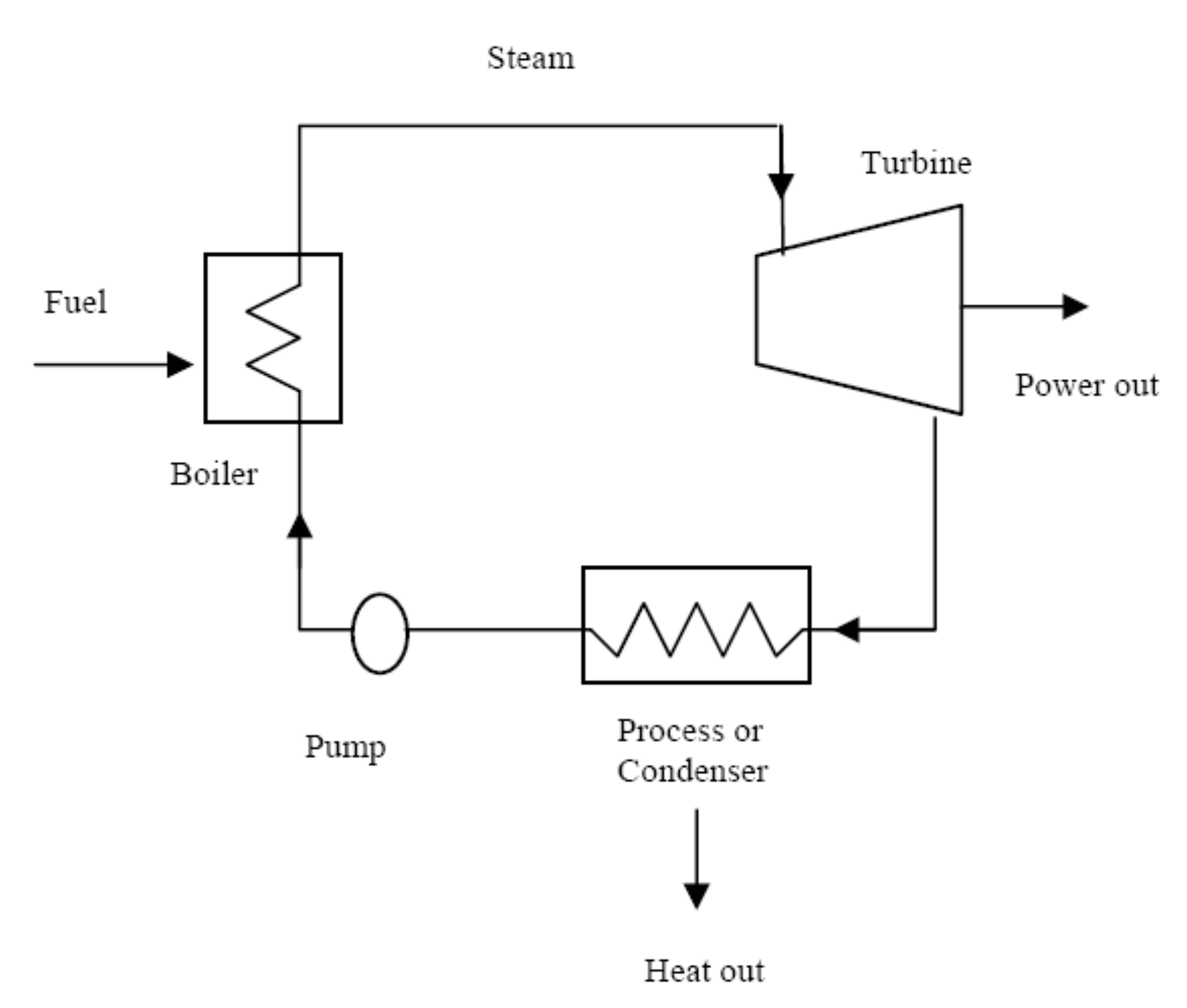
The concept behind concentrated solar power date back to about 212 B.C. with Archimedes and the Burning Mirrors, but the theory of photovoltaic (PV) energy was not discovered until 1839. Even then, PV was hardly put into practice until the 1950s. PVs were initially used to power satellites and spacecraft due to their light weight compared to carrying years worth of rocket fuel and the sun’s abundance of energy in space. With the growing instability of fossil fuel industries through the second half of the 20th century, people became desperate to find alternative power sources to be used on Earth.
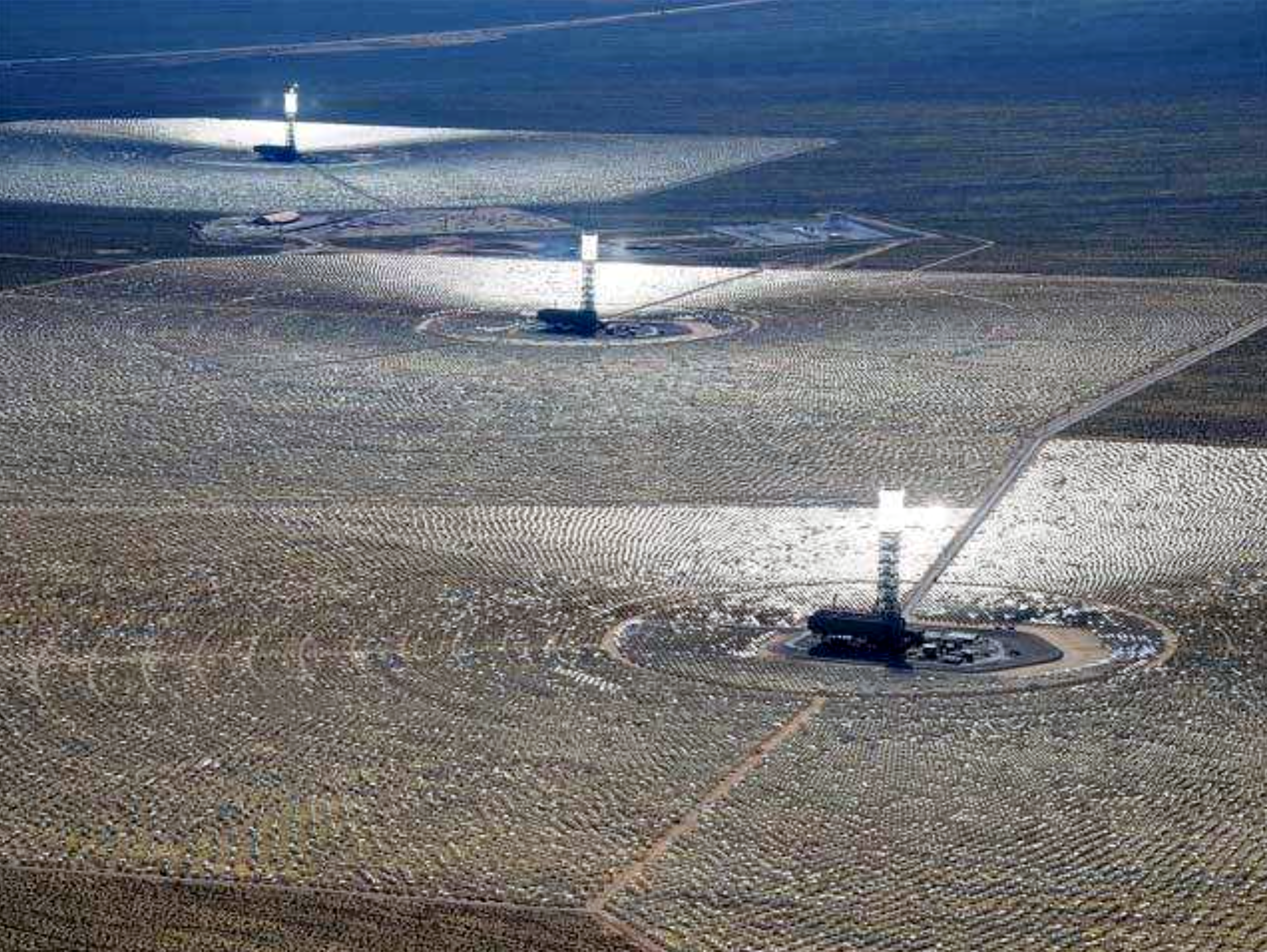
PV cells are made from semiconducting materials. The vast majority of commercial-use solar panels are made out of silicon, although other potentially more efficient materials are being researched. Silicon is one of the most abundant elements on Earth. Because it is already extensively used in manufacturing computer hardware, there are already extensive supply chains in place for PV manufacturers to tap into. The United States Department of Energy explains how PV cells work:
When the semiconductor is exposed to light, it absorbs the light’s energy and transfers it to negatively charged particles in the material called electrons. This extra energy allows the electrons to flow through the material as an electrical current. This current is extracted through conductive metal contacts – the grid-like lines on a solar cells – and can then be used to power your home and the rest of the electric grid. (Solar Energy Technologies Office)
Silicon solar cells can theoretically convert up to 32% of the sun’s energy that reaches the cell into useable electricity. However, current high-quality silicon solar cells range in efficiency from 18% to 22% (Solar Energy Technologies Office). Many factors contribute to this seemingly low rating, including material quality, inverting energy from DC to AC and back to DC, light being reflected off of the cells rather than being absorbed, energy that is converted into heat rather than electricity, decaying quality as solar panels get older, and imperfect engineering. Not to mention environmental factors that affect captured solar energy.
Solar arrays can still function at up to 80% of their maximum efficiency on a partially cloudy day (Environmental and Energy Study Institute). The bandwidth of light that solar panels utilize the most can pass through clouds. Cold weather is also ideal for PV cells to function at their best. Most PV cell manufacturers measure what is known as a “temperature coefficient,” which measures the percent decrease in electrical output for every 1°C increase in temperature above 25°C (Ost). The temperature coefficient means that solar panels become less effective as their temperature rises above 77°F. Shade, on the other hand, can have a detrimental effect on solar panel functionality. “Depending on the exact circumstances, even if only 1% of a photovoltaic solar panel is in the shade, it is possible to lose 50 – 80% of power production from your entire solar array” (Coulee Limited). This effect happens because all of the panel’s cells are strung together in an array, so the panel can only function as well as its weakest cell. When a series of panels are strung together in an array, it has the same effect on the entire system.
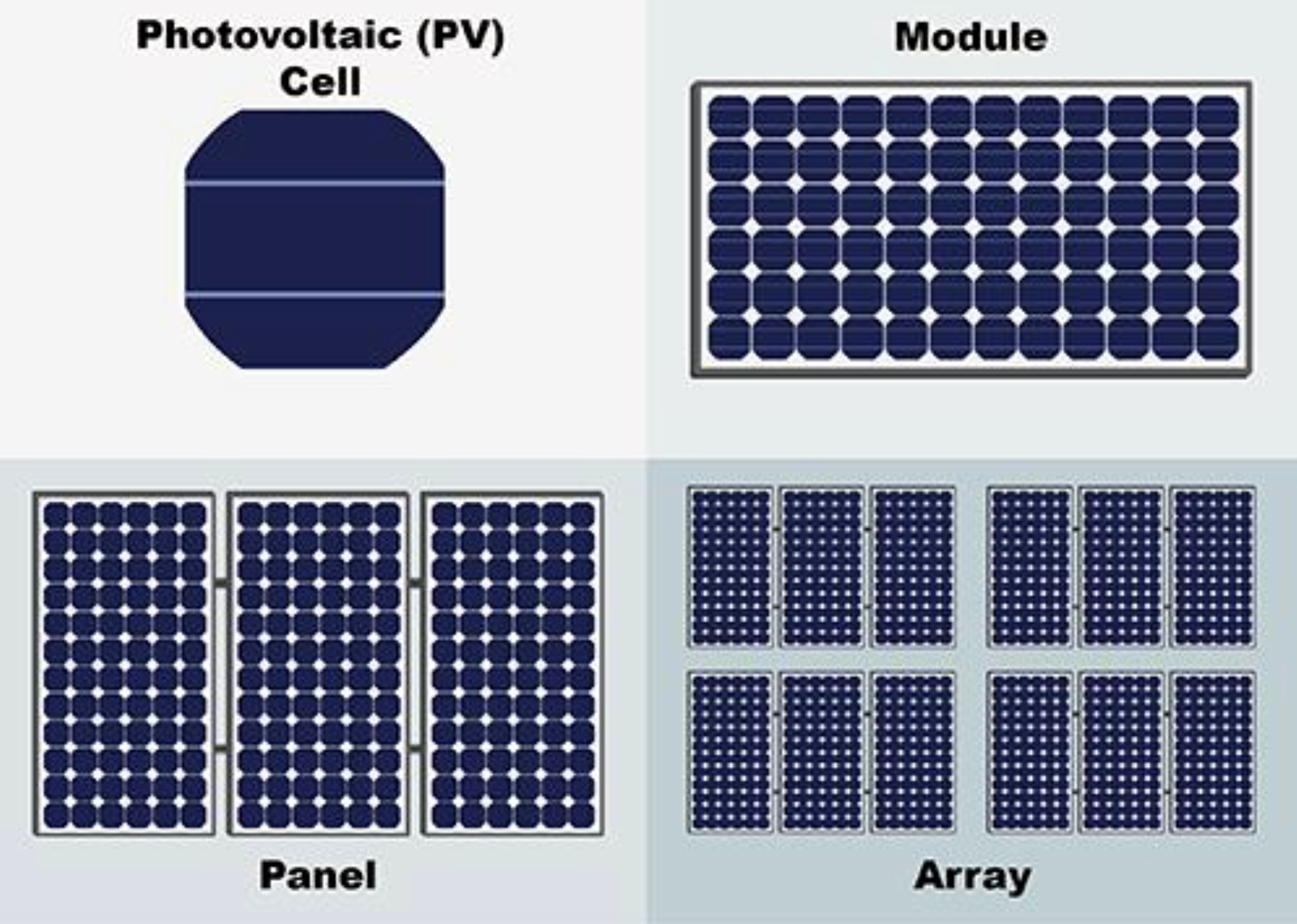
Many factors play into how well a PV array functions. More research is still to be done on photovoltaics and energy storage to maximize the energy we can capture from the sun. Still, studies have shown that solar is now the cheapest alternative energy option and is now even more affordable than petroleum (Evans and Gabbatiss). Claiming that solar energy is too expensive for mass implementation is no longer a compelling argument against photovoltaics. As research and development of heavy-duty energy storage and more efficient solar arrays progress, solar will continue to become a more suitable option for residential, commercial, and industrial use. The technology we need is well within reach.
College campuses in the United States spend an average of $1.10 per ft2 on electricity annually (nationalgrid). Considering these statistics, the Kent State University at Trumbull campus spends an estimated $271,150 annually on electricity (Kent State University 2021). The recent addition of the Kent State Trumbull Solar Project is expected to generate up to 65% of the campus’s energy from solar power (Kent State University 2020). Of course, the solar array does not come free of charge. Electricity from the power grid averages a cost of about 13¢ per kilowatt-hour (U.S. Energy Information Administration). In contrast, commercial photovoltaic energy is estimated to be less than 8¢ per kilowatt-hour, including the Federal Solar Tax Credit (Homeguide.com). The difference between a few cents doesn’t appear to add up to much but consider that the Kent State Trumbull Solar Project will produce an estimated 1,647 megawatt- hours of energy annually. The project will effectively put over $82,400 back into the university’s yearly budget to be put towards financial aid, academics, athletics, faculty salaries, and other valuable assets to the institution. With similar projects currently in development at Kent State’s Ashtabula, East Liverpool, Geauga, Kent, Salem, and Stark campuses, Kent State University will save hundreds of thousands of dollars across six of their seven campuses while pioneering the mass implementation of photovoltaics in Northeastern Ohio.
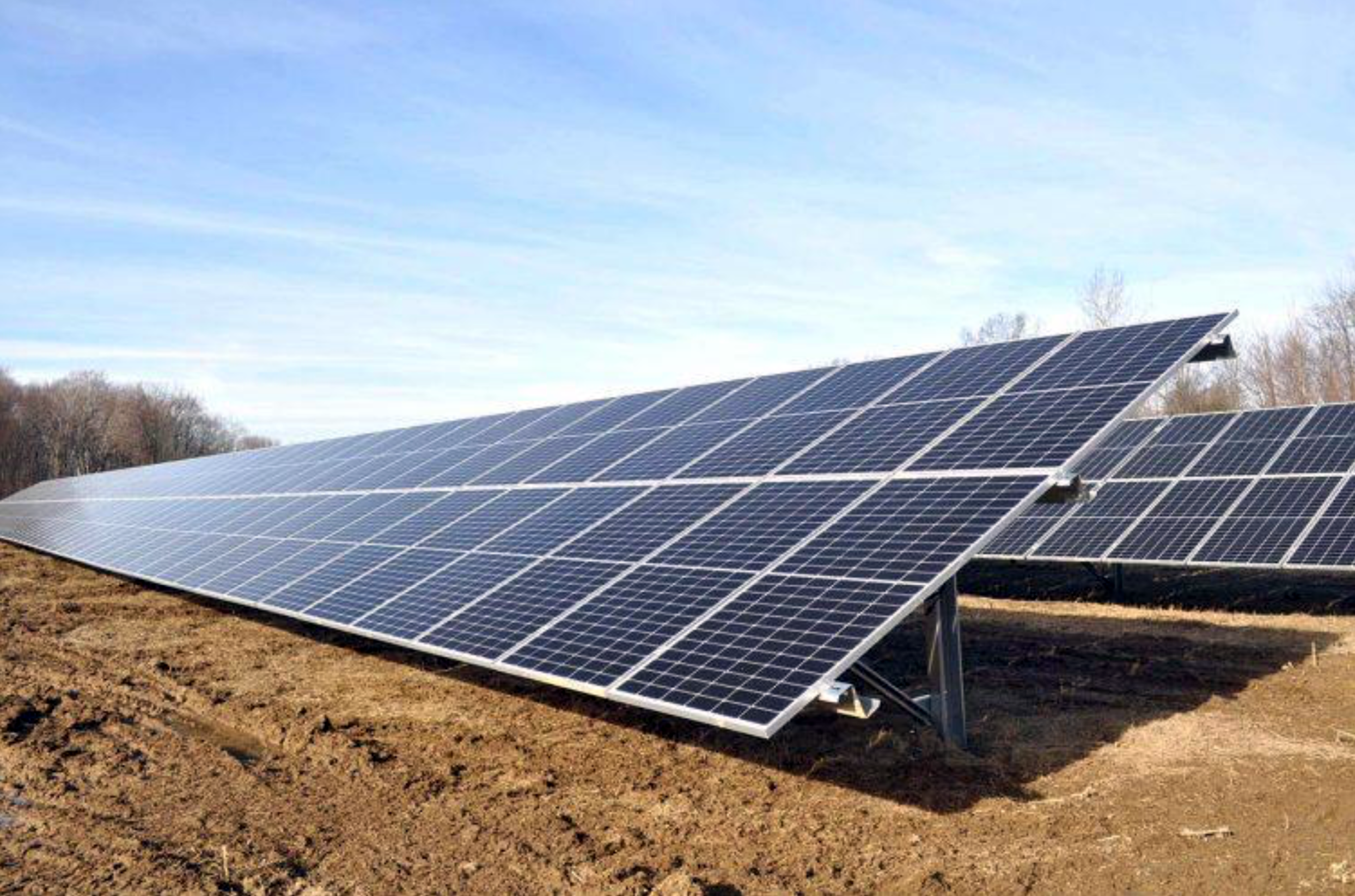
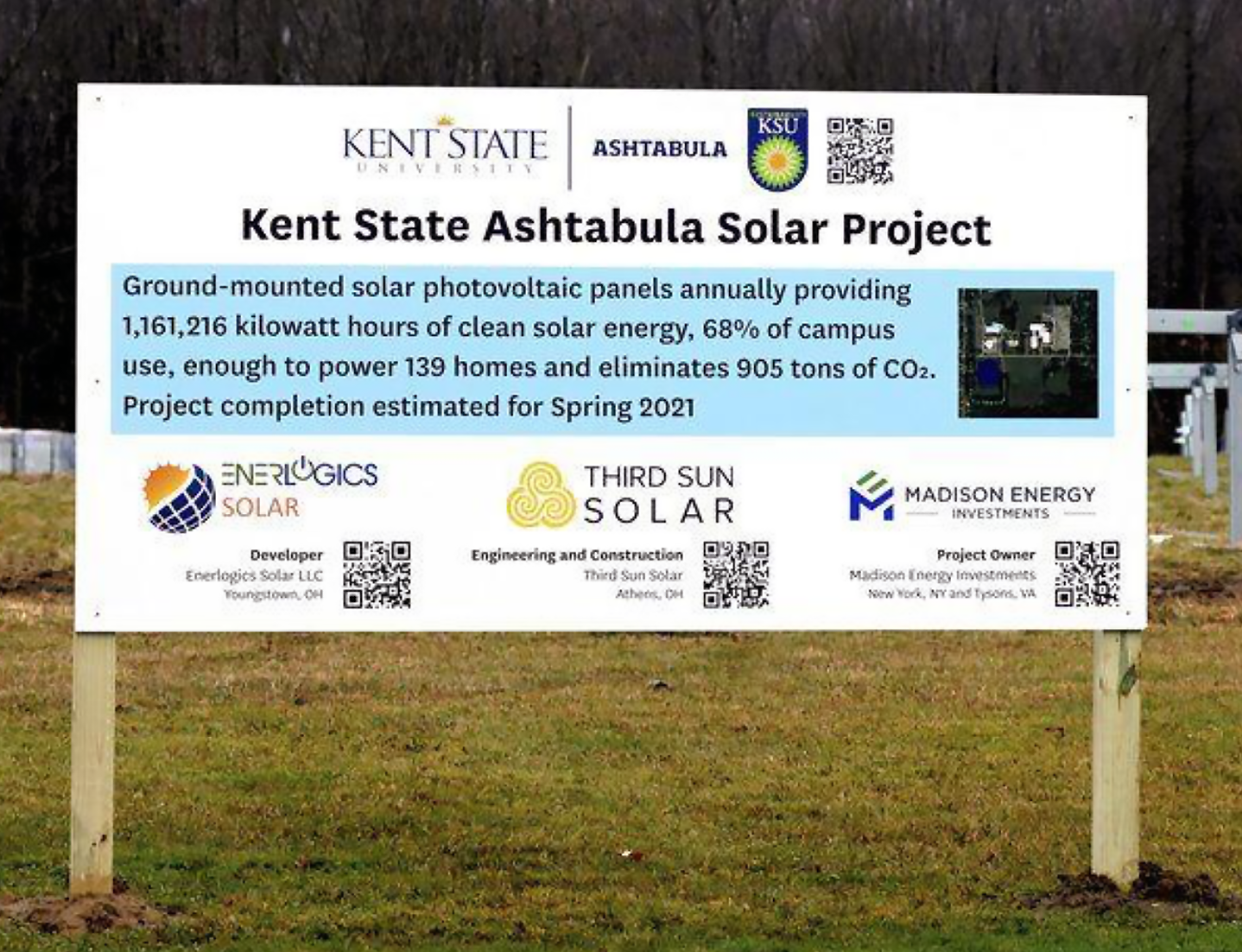
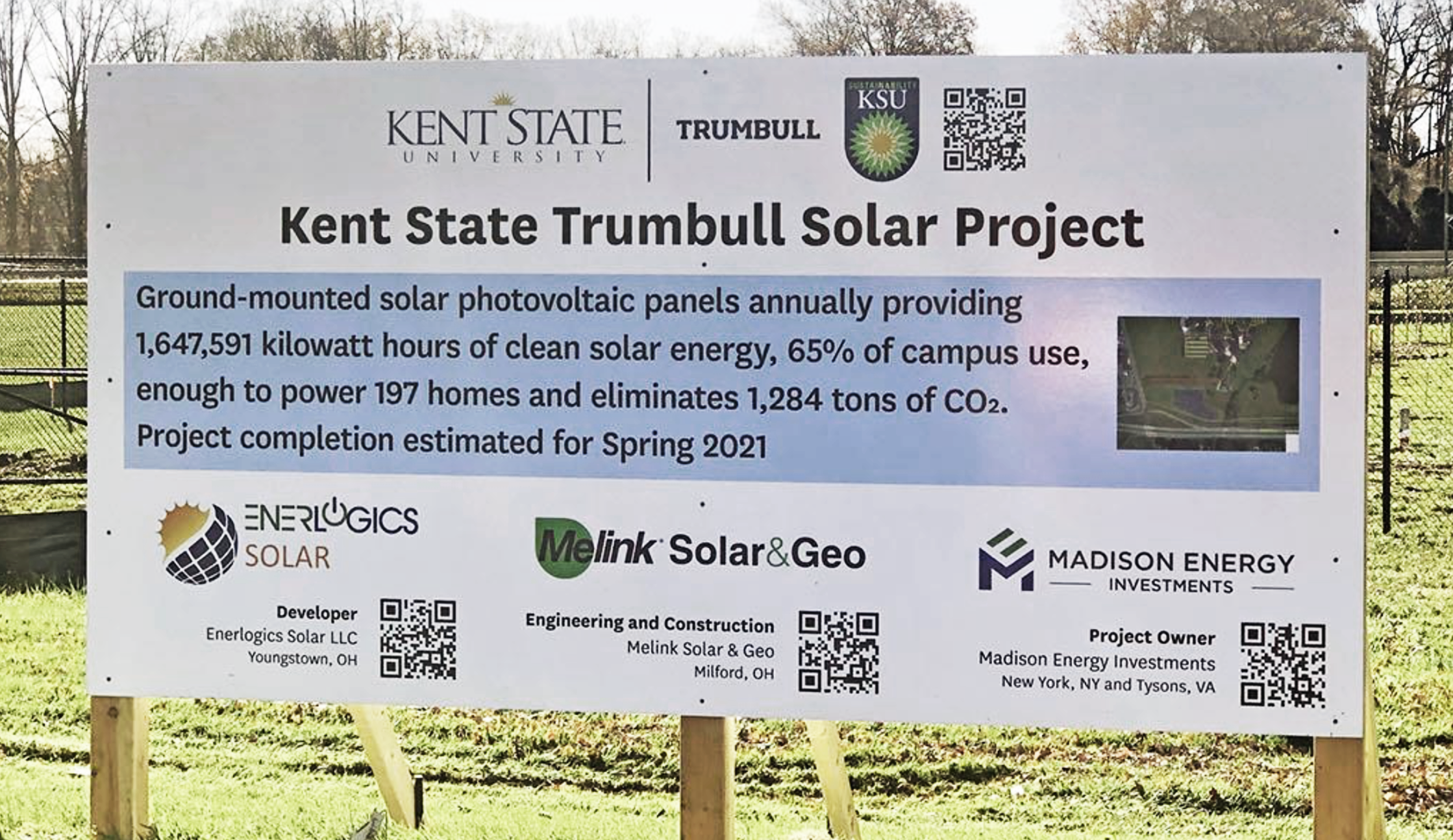
Renewable energy is often touted as a perfect end-all-be-all solution to replacing fossil fuels. In general, the positives outweigh the negatives when it comes to replacing finite energy sources with renewables. Still, it is essential to recognize their weaknesses and the damage they cause to find ways to improve them. Wind turbines are noisy, kill flying animals, and are reliant on the weather, which can be inconsistent, nuclear power plants can be catastrophic during emergencies and produce dangerous waste, and hydroelectric dams can take up miles of populated and agricultural land in order to create a reservoir and heavily affect the people and environment around them. Photovoltaics face similar pitfalls beyond those already mentioned.
As previously mentioned, PV systems can produce energy in poor weather, and rain is beneficial in cleaning off dust and debris from panels. There’s still no getting around their inability to produce energy during the night. What is worse is that solar panels reach peak production during the middle of the day when people are often not at home, suitable for commercial use, not residential. The best solution for these issues is to connect solar arrays to batteries, the power grid, or another means of energy storage so that the electricity is used later when the solar array cannot generate enough electricity to meet demand. Combining any form of renewable energy with the means to store excess energy would make them a much more pragmatic energy source. However, the heavy-duty batteries needed to collect enough power for an entire house, factory, or community still need further research and development before mass application is possible
Over the past several decades, batteries have been designed to be used for small, portable, lightweight, and handheld purposes such as flashlights, cell phones, and small toys. Electrical batteries have never been sought out as a solution to heavy-duty energy storage until recently. The technology we currently have for batteries is not designed for that purpose. Energy storage will be a crucial aspect to the success of any renewable energy source. Ambri is one such company developing battery technology that can meet the demands of heavy-duty energy storage where current batteries fall short (Crawford). Ambri’s batteries use two different metals that are heated until they become liquids and separate due to density differences, much like how oil sits on top of water. These liquid battery systems are much more stable than the solid-state batteries currently used when they are scaled up to hold enough energy for a house or a power plant. They are also proven to not decay in capacity over time in the same way that solid-state batteries do. It is estimated that a liquid metal battery can be used for over 15 years with hardly any degradation in performance (Crawford). With enough solar panels and a strong battery, the typical American home could easily produce and store enough clean energy to go off-grid entirely. Making that into a viable and cost-effective option for most people is yet to be achieved, but there is plenty of potential to see it happen within the coming years.
The American power grids are in desperate need of a total metamorphosis. Not only do we need to overhaul where our electricity comes from completely, but the grid itself has needed massive updates for decades now. Putting up a few more solar panels and wind turbines is only a fraction of the answer. To construct and maintain a power grid meant to last that addresses environmental, social, and economic needs that are currently neglected, it will require a bipartisan coalition of politicians, scientists, manufacturers, laborers, and the citizens who will rely on the power from these grids. The answers are already there. The next step is to set forth a plan that all parties can agree upon and set it into action.
REFERENCES
Boston Solar. How do temperature and shade affect solar panel efficiency? 14 June 2020.
Coulee Limited. Solar Panels – Effects of Shading & How to Avoid It? 30 October 2019.
Crawford, Mark. “Liquid Metal Batteries May Revolutionize Energy.” The American Society of Mechanical Engineers (2017).
Environmental and Energy Study Institute. Solar Energy. n.d.
Evans, Simon and Josh Gabbatiss. Solar is now ‘cheapest electricity in history’, confirms IEA. Carbon Brief 13 October 2020.
Homeguide.com. How much will your solar panels cost? n.d.
Kent State University Trumbull. Campus History. n.d. 15 March 2021.
———. Kent State Trumbull Adding Solar Panels. 23 November 2020.
———. Managing Energy Costs in Colleges and Universities. 2003.
Ost, Isaac. Does Solar Panel Temperature Coefficient Matter? 16 August 2018.
Randazzo, Ryan. Cause of APS battery explosion that injured 9 first responders detailed in new report. 27 July 2020.
Solar Energy Technologies Office. PV Cells 101: A Primer on the Solar Photovoltaic Cell. Office of Energy Efficiency & Renewable Energy. 18 March 2021.
———. Solar Photovoltaic Cell Basics. Office of Energy Efficiency & Renewable Energy. 18 March 2021.
U.S. Energy Information Administration. Electricity. January 2021.



